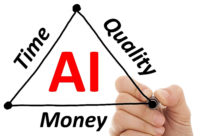How Does Process Control Work, Exactly?
Get to know the equipment that drives manufacturing inspection.

Process control is frequently used for mass production. It automates precise industrial processes and is easy enough to for even small staff to manage complex processes from a central control room.
Process control systems (PCS), are production line equipment that test manufacturing processes in a variety of ways and send back data for monitoring and analysis.
Numerous types of process control systems exist, including supervisory control and data acquisition, programmable logic controllers and distributed control systems. These systems work in tandem to collect and transfer data attained during the manufacturing process.
The PCS can be a moderately simple item with a sensor, often called a primary transducer. The transducer obtains an input, a controller that processes it, and a receiver that processes the output.
Robotic PCS devices are more complex and multi-functional. They translate data to a manufacturer’s enterprise resource planning computer application through middleware software, which called a manufacturing execution system.
A PCS sensor can collect various production-line measurements including pressure, flow rate, density, acidity, velocity, speed, stress, temperature, and weight. It can also note if tasks have been accomplished— for example, if the correct pressure has been achieved, or if a certain temperature has been reached.
Sensors detect pressure, flow, force, and temperature.
Pressure sensors are often activated when a part is near. The pressure sensor then shows the reading on a dial attached to the sensor and it can also send the reading to the manufacturing execution system. Other types of sensors include:
Piston pressure sensors are activated when pressure from a part on the production line pushes the piston, which squeezes a spring. This denotes the pressure.
Diaphragm sensors are affected by small amounts of pressure, which show up on a dial.
Flow meters measure the flow rate of a liquid or a gas.
When selecting a flow meter, operators must know the fluid involved, rate of movement, and how to record the flow. Flow meter types include the positive displacement, differential, and inferential tools.
A force sensor measures forces and torque. They usually contain strain gauges and can communicate information required for force measurements. Force sensors can be mechanical, hydraulic, or electrical.
Temperature sensors transforms temperature into mechanical movement or electric voltage.
Thermocouples are wires insulated from each other with plastic or glass fiber materials.
Liquid expansion sensors are thermometers that can be filled with mercury, or an evaporating fluid used in refrigerators.
Finally, there are bimetallic sensor. When two metals are firmly joined and heated, the disparity in the expansion rate between the metals causes the strip to bend an ultimately moves a pointer on a dial.
Looking for a reprint of this article?
From high-res PDFs to custom plaques, order your copy today!







